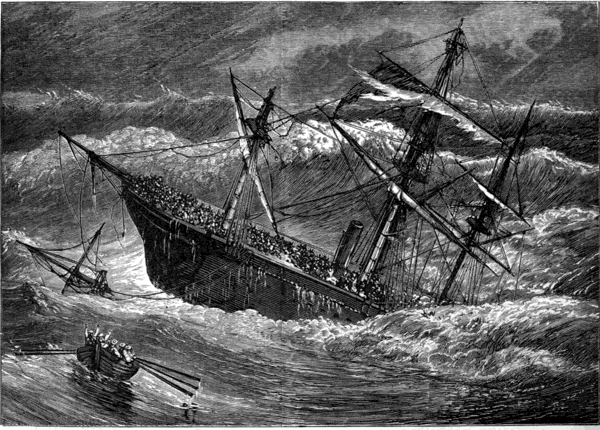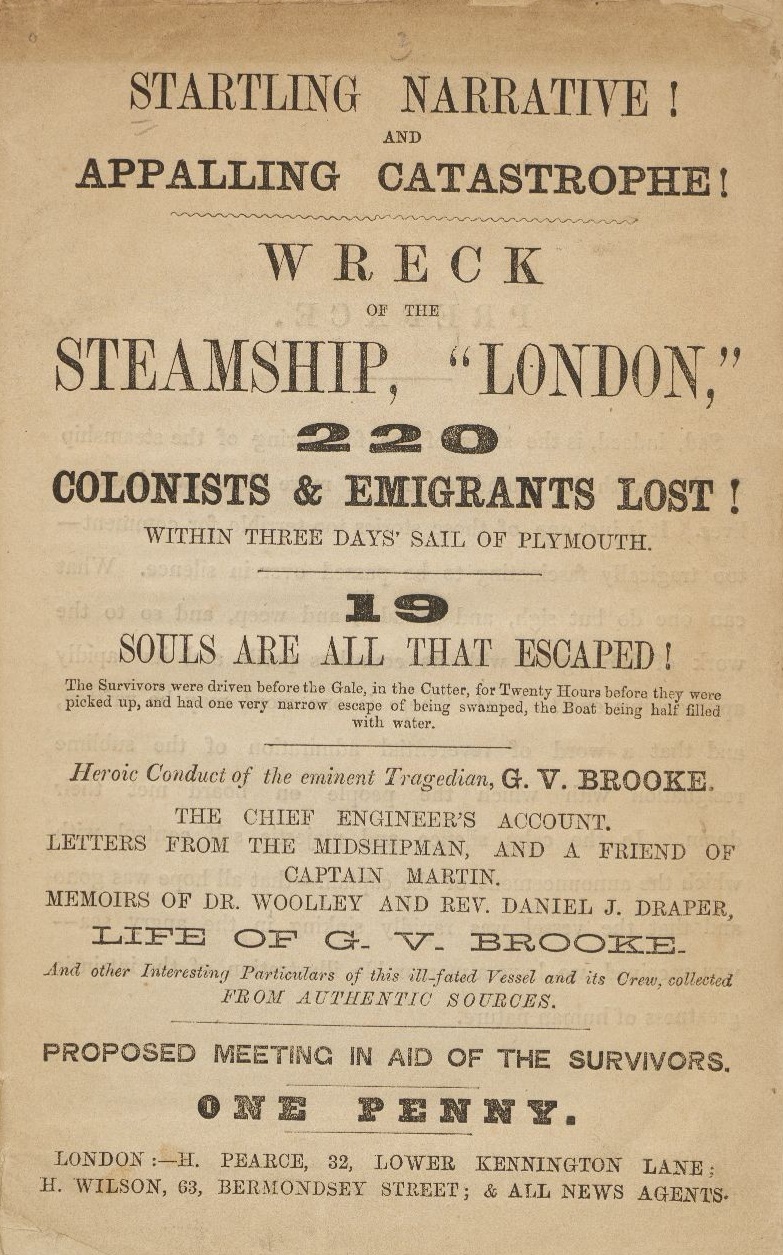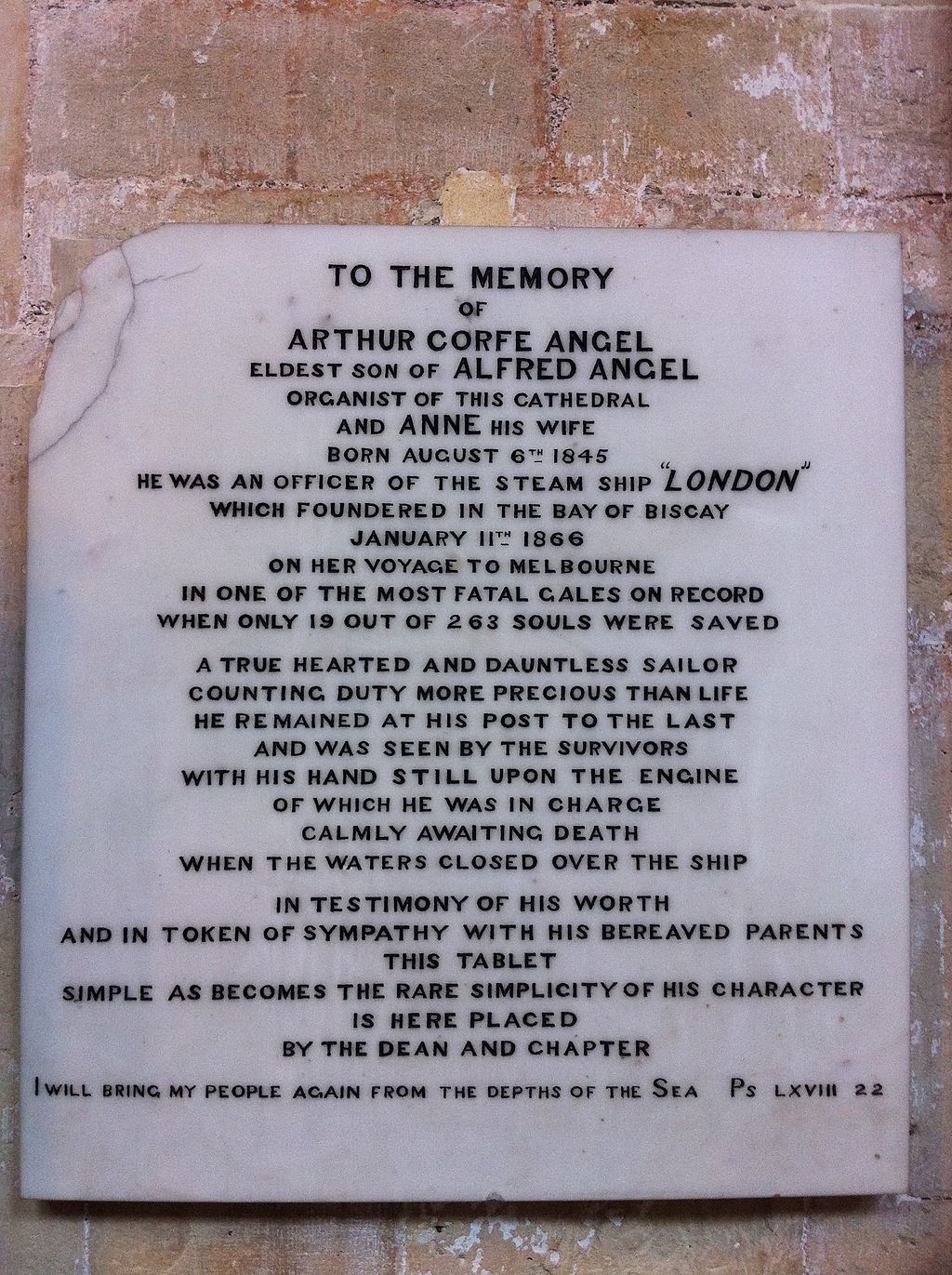
“Whimsy” columnist CLIVE WILLIAMS traces the story of Plimsoll line, starting at a memorial tablet to a lost seaman heading to Melbourne in Exeter Cathedral.
WHEN I travel, I always make a point of going into churches and cathedrals, not for religious reasons, but because they’re masterpieces of architecture and important repositories of social history.

Even modern ones can be impressive, such as Gaudi’s spectacular La Sagrada Familia in Barcelona (it’s also one of the few public places in Barcelona where you’re safe from pickpockets).
Memorial tablets are always worth reading. Inevitably they exaggerate the dead person’s worth, their heroic deeds, and the wretchedness of their poor relicts (widows) who can’t wait to join their dearly beloveds in anticipation of resurrection and eternal life.
One of the memorial tablets in England’s Exeter cathedral records the death of the eldest son of the cathedral’s organist, lost at sea – as was the case with many seafaring sons of Devon.
Arthur Corfe Angel, aged 20, was an officer on the sailing steamship “London” that sank in heavy seas in the Bay of Biscay on January 11, 1866. According to the memorial tablet, Arthur stayed at his post and went down with the ship. There were 263 persons on the ship of whom only 19 survived.
The “SS London” was of particular interest to me because it ran between Gravesend and Melbourne; and the captain was Australian, as were many of his passengers, some of them quite prominent. So I did a bit more digging into the circumstances of the tragedy.
The voyage began on December 13, 1865, when the ship left Gravesend bound for Melbourne under Capt Martin, an experienced Australian seafarer.

A story published after the loss claimed that when the ship was enroute down the Thames, a seaman seeing her pass Purfleet said: “It’ll be her last voyage… she’s too low down in the water, she’ll never rise to a stiff sea.” His prediction proved all too prescient.
After bad weather had delayed leaving Plymouth, on the third day out, while crossing the Bay of Biscay in a gale and heavy seas, the cargo shifted and her scuppers choked, forcing the vessel lower in the water where she was swept by tremendous seas.
Water poured down through the cargo hatches extinguishing her fires. Capt Martin decided to return toward Plymouth, but in doing so, headed back into the eye of a storm.
On January 11, a huge wave crashed on to the deck, smashing the engine hatch, which resulted in water entering the engine room, putting the engine fires out. By January 12, her deck was nearly level with the huge seas and the decision was made to abandon ship.
The lifeboats were swamped as soon as they were launched, with only one staying afloat. Nineteen people escaped on that lifeboat, only three of whom were passengers. They were picked up the next day by the barque “Marianople” and landed at Falmouth.
The subsequent British Board of Trade inquiry found three reasons for the loss of the London: first, the decision by Capt Martin to return to Plymouth, thereby re-entering the worst of the storm; second, the ship was overloaded with 345 tons of railway iron; and third, the 50 tons of coal stored above deck blocked the scupper holes and prevented drainage of the waves sweeping the decks.
This disaster, among others, led to the eventual introduction of the Plimsoll line to stop owners from overloading their vessels.
The memorial tablet recording the death of young Arthur Angel and his fellow travellers was a grim reminder of the hazards of sea travel to Australia in the 19th century.
Clive Williams is a Canberra columnist.

Who can be trusted?
In a world of spin and confusion, there’s never been a more important time to support independent journalism in Canberra.
If you trust our work online and want to enforce the power of independent voices, I invite you to make a small contribution.
Every dollar of support is invested back into our journalism to help keep citynews.com.au strong and free.
Thank you,
Ian Meikle, editor





Leave a Reply